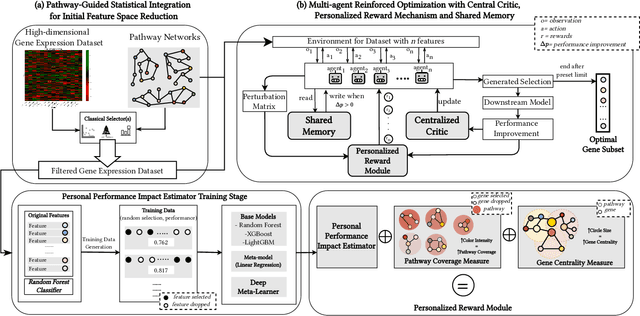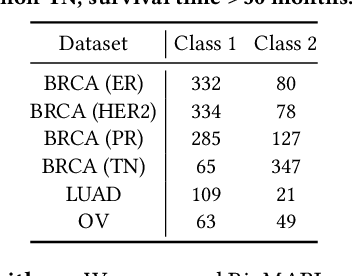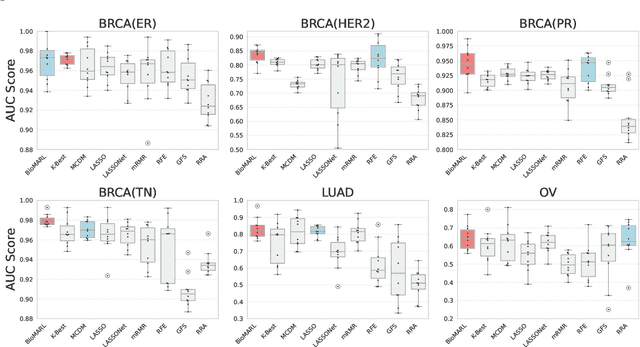Dongjie Wang
Ben
From Queries to Insights: Agentic LLM Pipelines for Spatio-Temporal Text-to-SQL
Oct 29, 2025Abstract:Natural-language-to-SQL (NL-to-SQL) systems hold promise for democratizing access to structured data, allowing users to query databases without learning SQL. Yet existing systems struggle with realistic spatio-temporal queries, where success requires aligning vague user phrasing with schema-specific categories, handling temporal reasoning, and choosing appropriate outputs. We present an agentic pipeline that extends a naive text-to-SQL baseline (llama-3-sqlcoder-8b) with orchestration by a Mistral-based ReAct agent. The agent can plan, decompose, and adapt queries through schema inspection, SQL generation, execution, and visualization tools. We evaluate on 35 natural-language queries over the NYC and Tokyo check-in dataset, covering spatial, temporal, and multi-dataset reasoning. The agent achieves substantially higher accuracy than the naive baseline 91.4% vs. 28.6% and enhances usability through maps, plots, and structured natural-language summaries. Crucially, our design enables more natural human-database interaction, supporting users who lack SQL expertise, detailed schema knowledge, or prompting skill. We conclude that agentic orchestration, rather than stronger SQL generators alone, is a promising foundation for interactive geospatial assistants.
TRUST-FS: Tensorized Reliable Unsupervised Multi-View Feature Selection for Incomplete Data
Sep 16, 2025Abstract:Multi-view unsupervised feature selection (MUFS), which selects informative features from multi-view unlabeled data, has attracted increasing research interest in recent years. Although great efforts have been devoted to MUFS, several challenges remain: 1) existing methods for incomplete multi-view data are limited to handling missing views and are unable to address the more general scenario of missing variables, where some features have missing values in certain views; 2) most methods address incomplete data by first imputing missing values and then performing feature selection, treating these two processes independently and overlooking their interactions; 3) missing data can result in an inaccurate similarity graph, which reduces the performance of feature selection. To solve this dilemma, we propose a novel MUFS method for incomplete multi-view data with missing variables, termed Tensorized Reliable UnSupervised mulTi-view Feature Selection (TRUST-FS). TRUST-FS introduces a new adaptive-weighted CP decomposition that simultaneously performs feature selection, missing-variable imputation, and view weight learning within a unified tensor factorization framework. By utilizing Subjective Logic to acquire trustworthy cross-view similarity information, TRUST-FS facilitates learning a reliable similarity graph, which subsequently guides feature selection and imputation. Comprehensive experimental results demonstrate the effectiveness and superiority of our method over state-of-the-art methods.
GPT-FT: An Efficient Automated Feature Transformation Using GPT for Sequence Reconstruction and Performance Enhancement
Aug 28, 2025



Abstract:Feature transformation plays a critical role in enhancing machine learning model performance by optimizing data representations. Recent state-of-the-art approaches address this task as a continuous embedding optimization problem, converting discrete search into a learnable process. Although effective, these methods often rely on sequential encoder-decoder structures that cause high computational costs and parameter requirements, limiting scalability and efficiency. To address these limitations, we propose a novel framework that accomplishes automated feature transformation through four steps: transformation records collection, embedding space construction with a revised Generative Pre-trained Transformer (GPT) model, gradient-ascent search, and autoregressive reconstruction. In our approach, the revised GPT model serves two primary functions: (a) feature transformation sequence reconstruction and (b) model performance estimation and enhancement for downstream tasks by constructing the embedding space. Such a multi-objective optimization framework reduces parameter size and accelerates transformation processes. Experimental results on benchmark datasets show that the proposed framework matches or exceeds baseline performance, with significant gains in computational efficiency. This work highlights the potential of transformer-based architectures for scalable, high-performance automated feature transformation.
Distribution Shift Aware Neural Tabular Learning
Aug 27, 2025



Abstract:Tabular learning transforms raw features into optimized spaces for downstream tasks, but its effectiveness deteriorates under distribution shifts between training and testing data. We formalize this challenge as the Distribution Shift Tabular Learning (DSTL) problem and propose a novel Shift-Aware Feature Transformation (SAFT) framework to address it. SAFT reframes tabular learning from a discrete search task into a continuous representation-generation paradigm, enabling differentiable optimization over transformed feature sets. SAFT integrates three mechanisms to ensure robustness: (i) shift-resistant representation via embedding decorrelation and sample reweighting, (ii) flatness-aware generation through suboptimal embedding averaging, and (iii) normalization-based alignment between training and test distributions. Extensive experiments show that SAFT consistently outperforms prior tabular learning methods in terms of robustness, effectiveness, and generalization ability under diverse real-world distribution shifts.
Efficient Post-Training Refinement of Latent Reasoning in Large Language Models
Jun 10, 2025



Abstract:Reasoning is a key component of language understanding in Large Language Models. While Chain-of-Thought prompting enhances performance via explicit intermediate steps, it suffers from sufficient token overhead and a fixed reasoning trajectory, preventing step-wise refinement. Recent advances in latent reasoning address these limitations by refining internal reasoning processes directly in the model's latent space, without producing explicit outputs. However, a key challenge remains: how to effectively update reasoning embeddings during post-training to guide the model toward more accurate solutions. To overcome this challenge, we propose a lightweight post-training framework that refines latent reasoning trajectories using two novel strategies: 1) Contrastive reasoning feedback, which compares reasoning embeddings against strong and weak baselines to infer effective update directions via embedding enhancement; 2) Residual embedding refinement, which stabilizes updates by progressively integrating current and historical gradients, enabling fast yet controlled convergence. Extensive experiments and case studies are conducted on five reasoning benchmarks to demonstrate the effectiveness of the proposed framework. Notably, a 5\% accuracy gain on MathQA without additional training.
Biological Pathway Guided Gene Selection Through Collaborative Reinforcement Learning
May 30, 2025



Abstract:Gene selection in high-dimensional genomic data is essential for understanding disease mechanisms and improving therapeutic outcomes. Traditional feature selection methods effectively identify predictive genes but often ignore complex biological pathways and regulatory networks, leading to unstable and biologically irrelevant signatures. Prior approaches, such as Lasso-based methods and statistical filtering, either focus solely on individual gene-outcome associations or fail to capture pathway-level interactions, presenting a key challenge: how to integrate biological pathway knowledge while maintaining statistical rigor in gene selection? To address this gap, we propose a novel two-stage framework that integrates statistical selection with biological pathway knowledge using multi-agent reinforcement learning (MARL). First, we introduce a pathway-guided pre-filtering strategy that leverages multiple statistical methods alongside KEGG pathway information for initial dimensionality reduction. Next, for refined selection, we model genes as collaborative agents in a MARL framework, where each agent optimizes both predictive power and biological relevance. Our framework incorporates pathway knowledge through Graph Neural Network-based state representations, a reward mechanism combining prediction performance with gene centrality and pathway coverage, and collaborative learning strategies using shared memory and a centralized critic component. Extensive experiments on multiple gene expression datasets demonstrate that our approach significantly improves both prediction accuracy and biological interpretability compared to traditional methods.
Continuous Optimization for Feature Selection with Permutation-Invariant Embedding and Policy-Guided Search
May 16, 2025Abstract:Feature selection removes redundant features to enhanc performance and computational efficiency in downstream tasks. Existing works often struggle to capture complex feature interactions and adapt to diverse scenarios. Recent advances in this domain have incorporated generative intelligence to address these drawbacks by uncovering intricate relationships between features. However, two key limitations remain: 1) embedding feature subsets in a continuous space is challenging due to permutation sensitivity, as changes in feature order can introduce biases and weaken the embedding learning process; 2) gradient-based search in the embedding space assumes convexity, which is rarely guaranteed, leading to reduced search effectiveness and suboptimal subsets. To address these limitations, we propose a new framework that can: 1) preserve feature subset knowledge in a continuous embedding space while ensuring permutation invariance; 2) effectively explore the embedding space without relying on strong convex assumptions. For the first objective, we develop an encoder-decoder paradigm to preserve feature selection knowledge into a continuous embedding space. This paradigm captures feature interactions through pairwise relationships within the subset, removing the influence of feature order on the embedding. Moreover, an inducing point mechanism is introduced to accelerate pairwise relationship computations. For the second objective, we employ a policy-based reinforcement learning (RL) approach to guide the exploration of the embedding space. The RL agent effectively navigates the space by balancing multiple objectives. By prioritizing high-potential regions adaptively and eliminating the reliance on convexity assumptions, the RL agent effectively reduces the risk of converging to local optima. Extensive experiments demonstrate the effectiveness, efficiency, robustness and explicitness of our model.
Collaborative Multi-Agent Reinforcement Learning for Automated Feature Transformation with Graph-Driven Path Optimization
Apr 24, 2025



Abstract:Feature transformation methods aim to find an optimal mathematical feature-feature crossing process that generates high-value features and improves the performance of downstream machine learning tasks. Existing frameworks, though designed to mitigate manual costs, often treat feature transformations as isolated operations, ignoring dynamic dependencies between transformation steps. To address the limitations, we propose TCTO, a collaborative multi-agent reinforcement learning framework that automates feature engineering through graph-driven path optimization. The framework's core innovation lies in an evolving interaction graph that models features as nodes and transformations as edges. Through graph pruning and backtracking, it dynamically eliminates low-impact edges, reduces redundant operations, and enhances exploration stability. This graph also provides full traceability to empower TCTO to reuse high-utility subgraphs from historical transformations. To demonstrate the efficacy and adaptability of our approach, we conduct comprehensive experiments and case studies, which show superior performance across a range of datasets.
Generative AI in Transportation Planning: A Survey
Mar 10, 2025Abstract:The integration of generative artificial intelligence (GenAI) into transportation planning has the potential to revolutionize tasks such as demand forecasting, infrastructure design, policy evaluation, and traffic simulation. However, there is a critical need for a systematic framework to guide the adoption of GenAI in this interdisciplinary domain. In this survey, we, a multidisciplinary team of researchers spanning computer science and transportation engineering, present the first comprehensive framework for leveraging GenAI in transportation planning. Specifically, we introduce a new taxonomy that categorizes existing applications and methodologies into two perspectives: transportation planning tasks and computational techniques. From the transportation planning perspective, we examine the role of GenAI in automating descriptive, predictive, generative, simulation, and explainable tasks to enhance mobility systems. From the computational perspective, we detail advancements in data preparation, domain-specific fine-tuning, and inference strategies, such as retrieval-augmented generation and zero-shot learning tailored to transportation applications. Additionally, we address critical challenges, including data scarcity, explainability, bias mitigation, and the development of domain-specific evaluation frameworks that align with transportation goals like sustainability, equity, and system efficiency. This survey aims to bridge the gap between traditional transportation planning methodologies and modern AI techniques, fostering collaboration and innovation. By addressing these challenges and opportunities, we seek to inspire future research that ensures ethical, equitable, and impactful use of generative AI in transportation planning.
A Survey on Data-Centric AI: Tabular Learning from Reinforcement Learning and Generative AI Perspective
Feb 12, 2025


Abstract:Tabular data is one of the most widely used data formats across various domains such as bioinformatics, healthcare, and marketing. As artificial intelligence moves towards a data-centric perspective, improving data quality is essential for enhancing model performance in tabular data-driven applications. This survey focuses on data-driven tabular data optimization, specifically exploring reinforcement learning (RL) and generative approaches for feature selection and feature generation as fundamental techniques for refining data spaces. Feature selection aims to identify and retain the most informative attributes, while feature generation constructs new features to better capture complex data patterns. We systematically review existing generative methods for tabular data engineering, analyzing their latest advancements, real-world applications, and respective strengths and limitations. This survey emphasizes how RL-based and generative techniques contribute to the automation and intelligence of feature engineering. Finally, we summarize the existing challenges and discuss future research directions, aiming to provide insights that drive continued innovation in this field.
 Add to Chrome
Add to Chrome Add to Firefox
Add to Firefox Add to Edge
Add to Edge